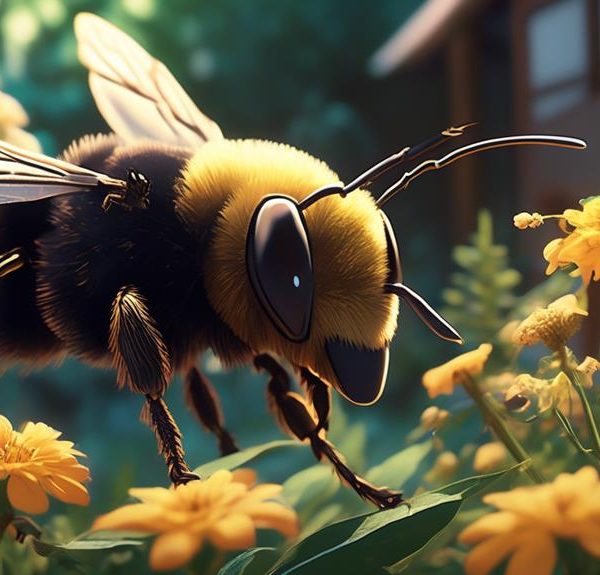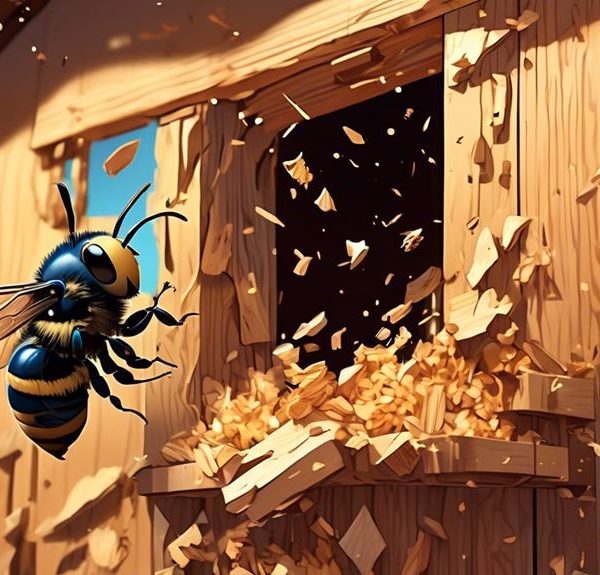Keep your wooden structures intact by learning what to fill carpenter bee holes with; delve deeper to discover effective solutions.
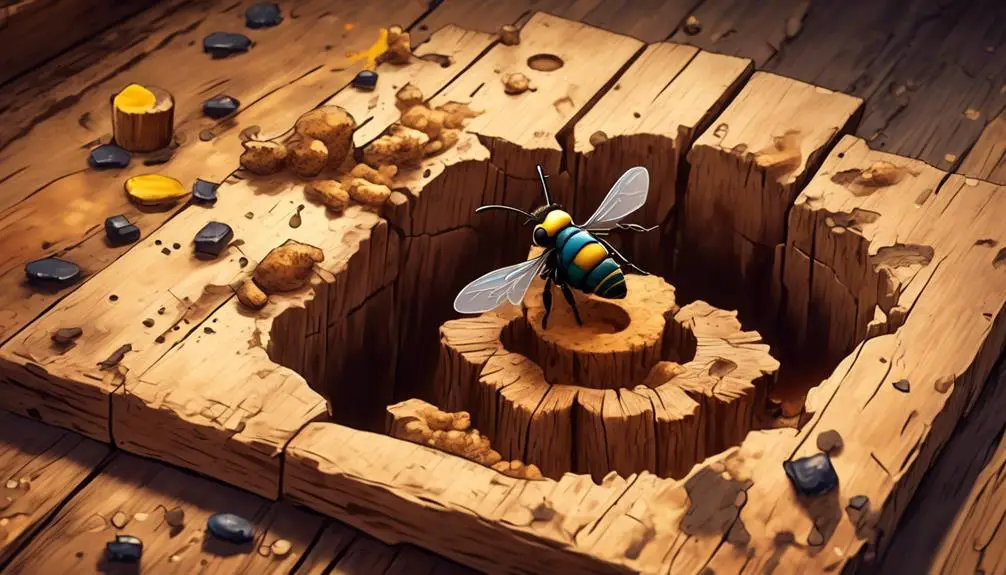
What Do You Fill Carpenter Bee Holes With
Just as a captain patches up breaches in his ship to keep it afloat, you're faced with the task of filling those pesky carpenter bee holes that mar your wooden structures.
Carpenter bees, despite their industrious name, can leave behind quite a mess in their wake, compromising the integrity and aesthetics of your woodwork.
You're probably wondering, what's the best material to fill these holes with? Should you opt for a simple wood filler, or is there a more specialized solution?
Well, before we jump straight to the answers, let's first understand the nature of these culprits and the extent of damage they can do.
Key Takeaways
- Carpenter bees are solitary creatures that create nests in untreated or unpainted wood.
- Signs of infestation include small, round holes in wood surfaces, the presence of large bees, and yellowish substance near the holes.
- Safe filling materials for carpenter bee holes include wood putty, dowel rods, and steel wool.
- The hole filling process involves applying pest control product, using a putty knife to apply filler, and sanding the area for a flush surface.
Understanding Carpenter Bee Behavior
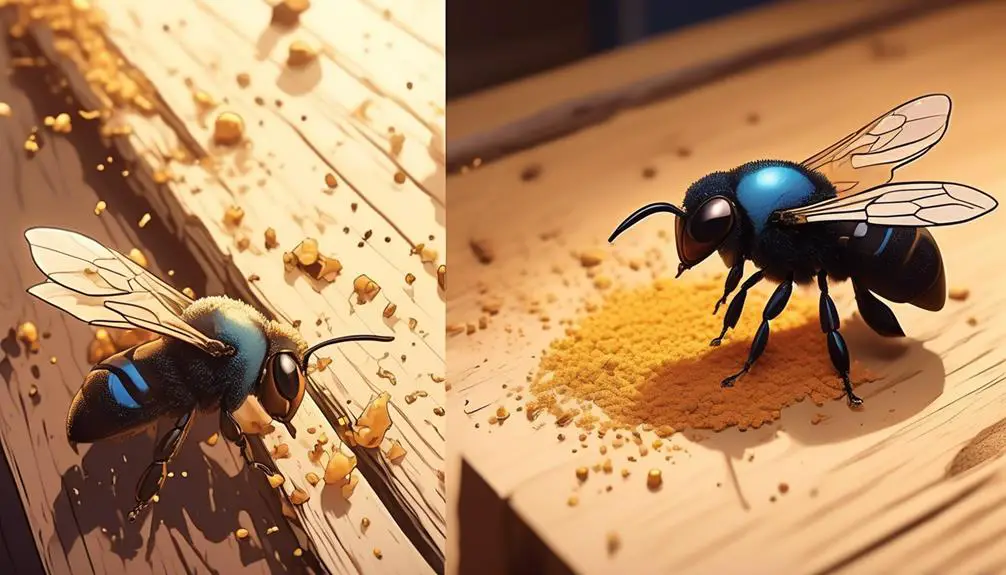
Why are carpenter bees drilling holes in your woodwork, you may wonder? Well, it's not because they're malicious or have a personal vendetta against your beautiful deck or porch. They're simply following their natural instincts.
Carpenter bees, unlike their more social counterparts, the honeybees and bumblebees, are solitary creatures. They don't live in hives but prefer to create nests in wood. They're not eating your wood, they're constructing a home. Female carpenter bees use their strong jaws to drill into untreated or unpainted wood, creating a nearly perfect half-inch round hole, which they then tunnel into. This tunnel, also known as a gallery, is where they lay their eggs and provide food for their offspring.
It's important to note that carpenter bees are essential pollinators, playing a crucial role in our ecosystem. However, their nesting habits can cause significant damage to wooden structures over time. Understanding their behavior is the first step in dealing with a carpenter bee problem. It's not about waging war, but finding a balance where both you and the bees can coexist. That's why filling their holes, with the right material and at the right time, is critical.
Signs of Carpenter Bee Infestations

Identifying a carpenter bee infestation in your home or property isn't always straightforward, but there are several tell-tale signs you can look out for. One of the most common indications is the presence of small, round holes in wood surfaces. These holes, typically about half an inch in diameter, are the entry points to the bees' tunnels. You'll often find them in unpainted or untreated wood, as carpenter bees prefer these materials.
Another sign is the sighting of large, black and yellow bees hovering around your property, especially near wooden structures. These are likely the male carpenter bees, which are known to be territorial. While they don't sting, their presence usually indicates a nearby nest.
You may also notice a yellowish substance, a mixture of bee feces and wood shavings, near the entrance of the holes. This is a byproduct of the bees' tunneling activity.
Safe and Effective Filling Materials

Once you've confirmed a carpenter bee infestation and located their tunnels, it's crucial to choose safe and effective filling materials to prevent further damage to your wood structures.
The first option is wood putty or filler. It's easy to use, simply apply it to the hole, and it hardens to form a solid surface. However, it's important to note that wood filler isn't durable enough for larger holes.
For more substantial damage, you may need to resort to dowel rods. These are wooden pegs that you can fit snugly into the tunnels, then secure with wood glue. This method offers a more durable solution.
Another option is steel wool. Its rough texture discourages bees from trying to chew through. To seal, you can cover it with a layer of wood putty or caulk.
Step by Step Hole Filling Guide
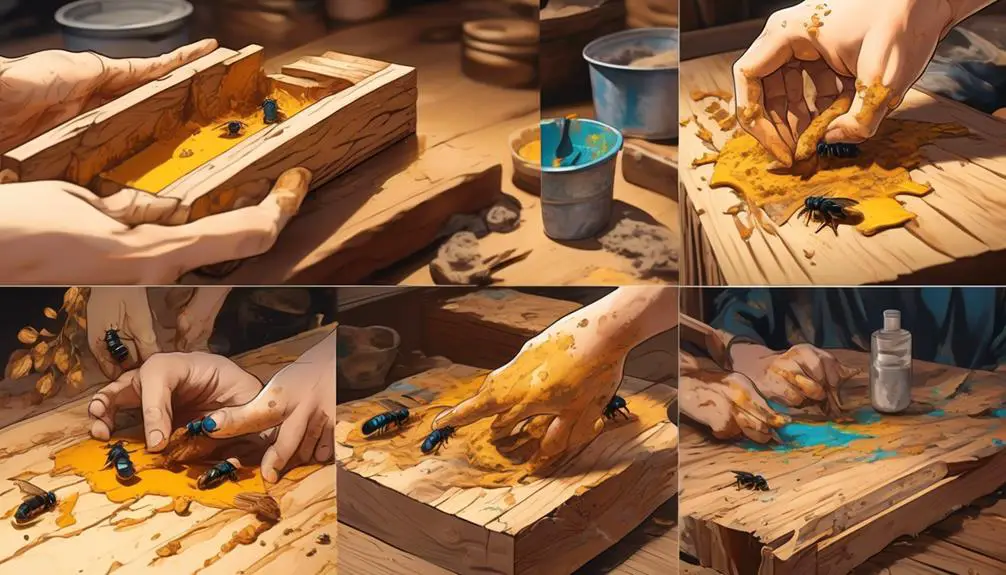
To effectively fill carpenter bee holes, you'll need to follow a clear, step-by-step process, ensuring each hole is thoroughly filled and sealed.
First, gather all necessary materials. You'll need a pest control product, a putty knife, and wood filler or caulk. Use a flashlight to inspect the holes, verifying they're no longer active.
Next, apply your chosen pest control product into the hole. It's important to do this before sealing to prevent future infestations. Make sure you're wearing protective gear for this step.
Then, use a putty knife to apply the wood filler or caulk. Fill the hole completely, ensuring no gaps are left. Smooth the filler with the putty knife, aiming for a surface flush with the surrounding wood.
Lastly, let the filler dry according to the manufacturer's instructions. Once it's dry, sand the area to blend it in with the surrounding wood.
Preventing Future Infestations
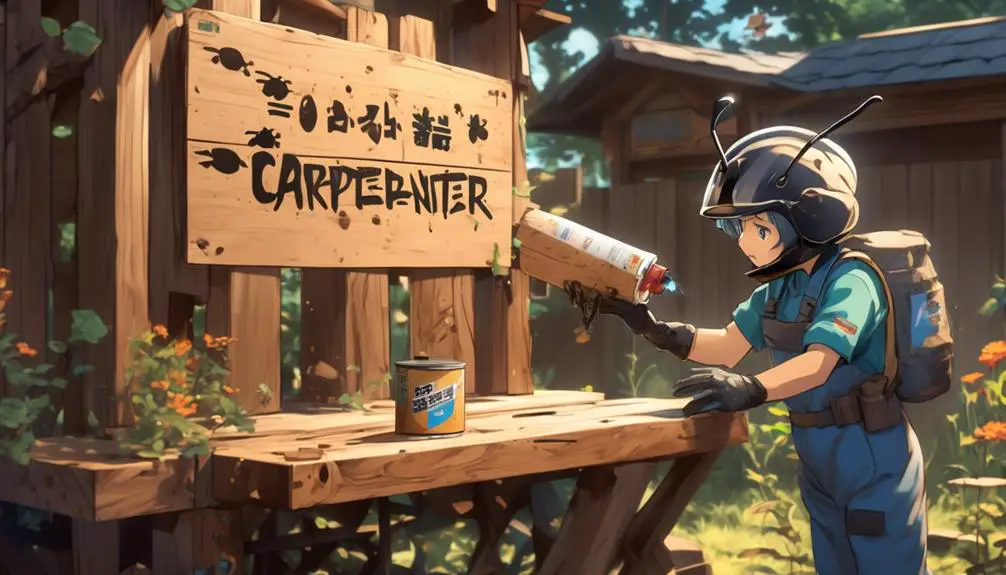
After successfully sealing the carpenter bee holes, it's crucial to take measures to ward off future invasions. Your first line of defense is to paint or varnish all exposed wood surfaces. Carpenter bees prefer untreated wood, so this step can make your property less attractive to them.
Next, consider using bee repellent products. These are available in various forms, such as sprays or powders, and can be applied to areas where bees have been a problem in the past. Always follow the manufacturer's instructions when using these products to ensure their effectiveness and your safety.
Another preventative measure is to install bee traps. These traps lure carpenter bees in, preventing them from drilling new holes into your woodwork. Keep in mind that traps are a more passive form of control and should be used in conjunction with other methods.
Lastly, regular inspections of your property can help identify any new bee activity early on. If you spot any signs, it's best to respond immediately before the problem escalates. Remember, prevention is always better than cure when it comes to carpenter bee infestations.
Conclusion
In conclusion, understanding carpenter bee behavior and signs of infestations is key.
Filling their holes with safe, effective materials like putty or caulk can mitigate damage. Following a thorough hole filling guide ensures success.
Remember, prevention is always better than cure, so keep your wooden structures treated and sealed to deter future infestations.
Continue to monitor your property for signs of these wood-boring insects to maintain a carpenter bee-free environment.

